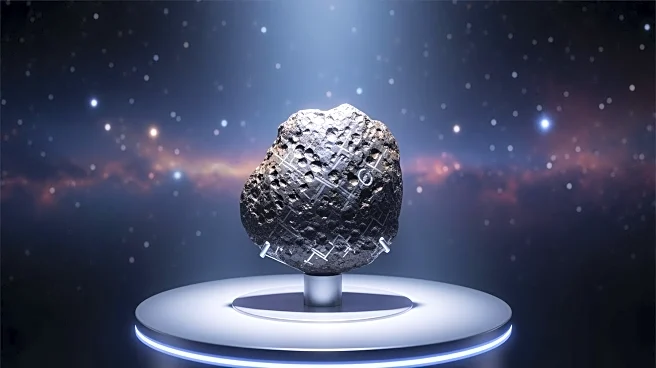What's Happening?
NASA's Perseverance rover, part of the Mars 2020 mission, has identified potential biosignatures in the 'Bright Angel' region of Jezero Crater on Mars. The rover's SHERLOC instrument detected organic molecules
in a rock formation, which could indicate past microbial life. These findings are part of NASA's broader Mars Exploration Program, which aims to understand the planet's geology and climate to prepare for future human exploration. The mission is managed by Caltech and JPL for NASA's Science Mission Directorate.
Why It's Important?
The discovery of potential biosignatures on Mars is significant as it could provide evidence of past life on the planet, a major goal of astrobiology. This finding could influence future Mars missions and the search for life beyond Earth. It also supports NASA's Moon to Mars exploration strategy, which includes the Artemis missions to the Moon as a precursor to human exploration of Mars. The presence of organic molecules, which can be formed by both geological and biological processes, necessitates further study to confirm their origin.
What's Next?
Further analysis and data collection by the Perseverance rover will be crucial to determine the nature of the detected organic molecules. NASA may plan additional missions or deploy more advanced instruments to Mars to explore these findings. The results could also impact the design and objectives of future Mars missions, including those involving human exploration. Collaboration with international space agencies and scientific communities will likely be essential in advancing the understanding of these potential biosignatures.












